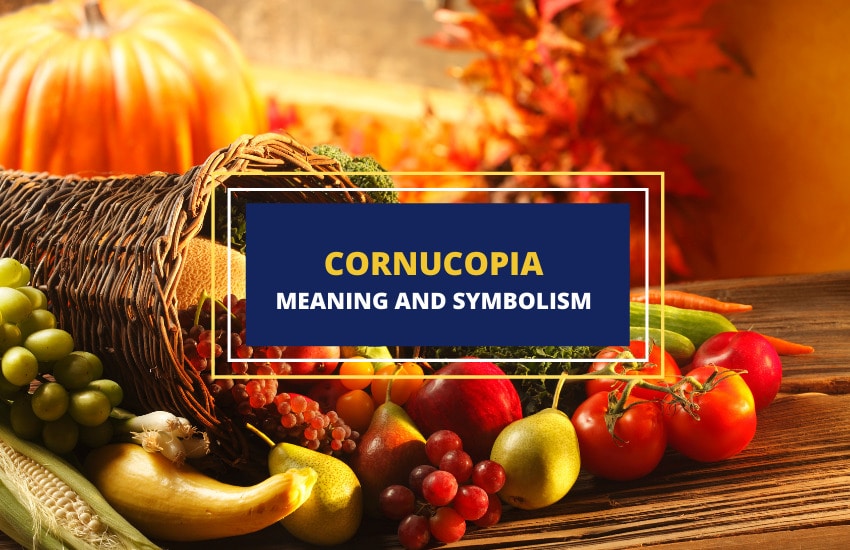
Table of Contents
The traditional symbol of harvest in Western culture, the cornucopia is a horn-shaped basket filled with fruits, vegetables, and flowers. Many associate it with the Thanksgiving holiday, but its origin can be traced back to the ancient Greeks. Here’s what to know about the interesting history and symbolism of the cornucopia.
Cornucopia Meaning and Symbolism
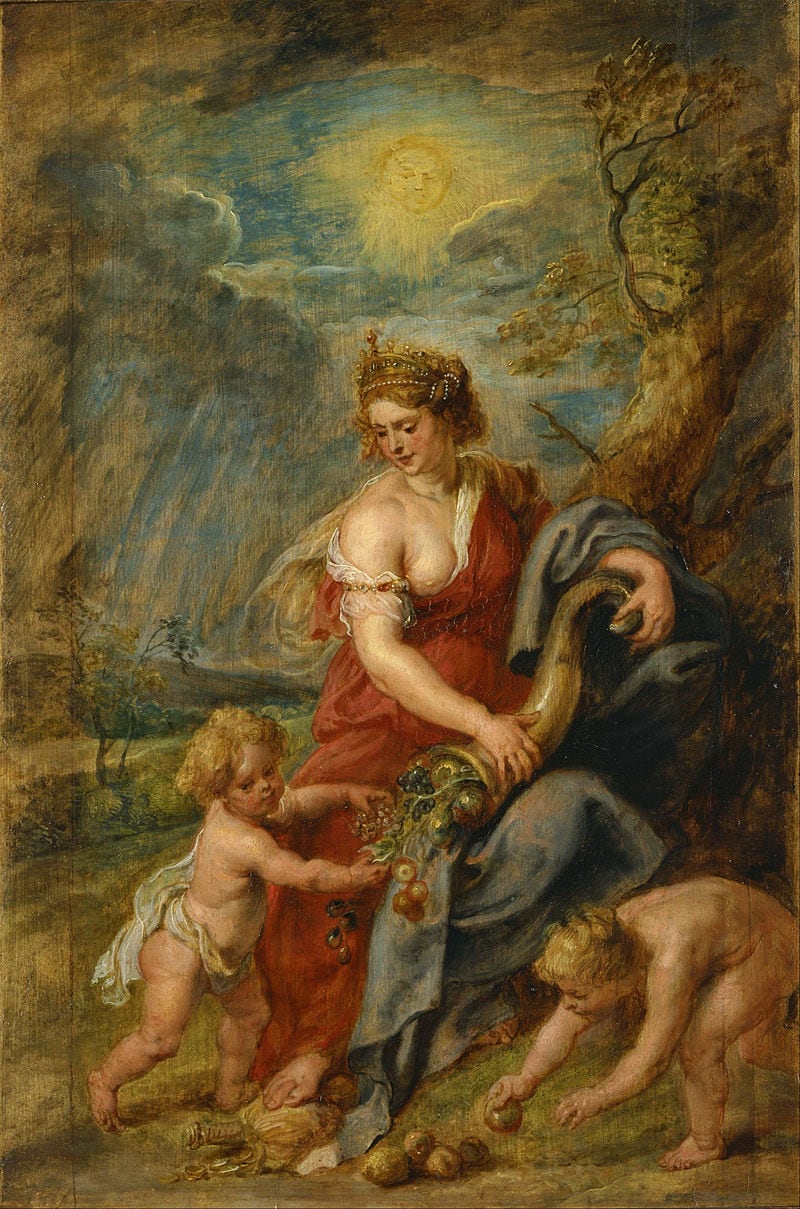
The term cornucopia comes from two Latin words cornu and copiae, meaning horn of plenty. The horn-shaped vessel is traditionally made of woven wicker, wood, metal, and ceramics. Here are some of its meanings:
- A Symbol of Abundance
In Greek mythology, the cornucopia is a mythical horn able to provide whatever is desired, making it a traditional staple at feasts. However, the term cornucopia can also be used figuratively to denote an abundance of something, such as cornucopia of pleasures, cornucopia of knowledge, and so on.
- A Bountiful Harvest and Fertility
Because the cornucopia demonstrates abundance, it represents fertility via a bountiful harvest. In paintings and contemporary decorations, it’s traditionally depicted with overflowing fruits and vegetables, suggesting a plentiful harvest. Different cultures around the world honor the fall harvest season with fun celebrations, but the cornucopia is mostly associated with the Thanksgiving holiday in the US and Canada.
- Wealth and Good Fortune
The cornucopia suggests abundance that comes from good fortune. One of the associations comes from the Roman goddess Abundantia who was always depicted with a cornucopia over her shoulder. Her horn of plenty often contains fruits, but it sometimes carries gold coins that magically spill out of it, associating it with inexhaustible riches.
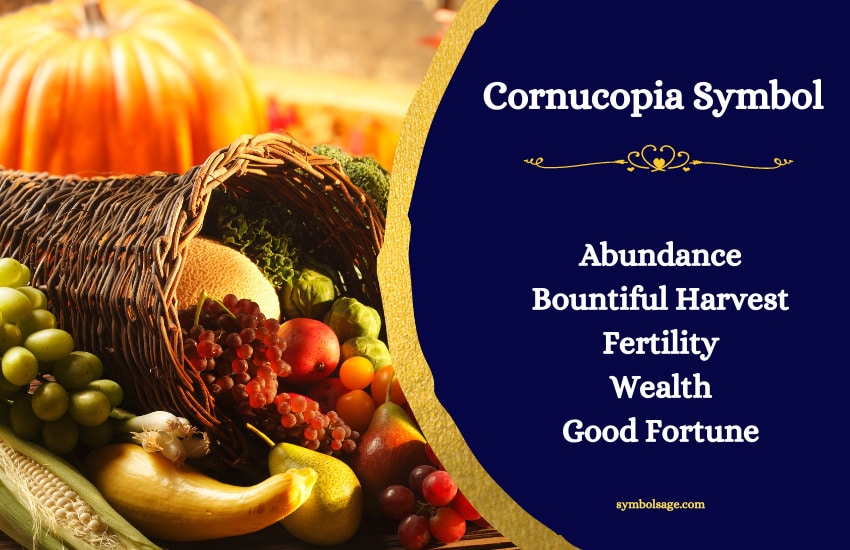
The Origins of the Cornucopia in Greek Mythology
The cornucopia originated in classical mythology, where it became associated with abundance. One story attributes the horn of plenty to Amalthea, a goat who raised Zeus. In another myth, it was the horn of river god Achelous, whom Hercules fought to win the hand of Deianeira.
1- Amalthea and Zeus
The Greek god Zeus was the son of two Titans: Kronos and Rhea. Kronos knew that he would be overthrown by his own child, so to be safe, Kronos decided to eat his own children. Fortunately, Rhea was able to hide baby Zeus in a cave in Crete, and left him with Amalthea, the she-goat foster mother of Zeus—or sometimes the nymph who fed him the milk of a goat.
Without realizing his strength, Zeus accidentally broke off one of the goat’s horns. In one version of the story, Amalthea filled the broken horn with fruits and flowers and presented it to Zeus. Some accounts say that Zeus gave the horn the power to instantly refill itself with endless food or drink. It became known as the cornucopia, the symbol of abundance.
To show his gratitude, Zeus even placed the goat and the horn in the heavens, creating the constellation Capricorn—derived from two Latin words caprum and cornu, meaning goat and horn respectively. Eventually, the cornucopia became associated with various divinities who were responsible for the fertility of the land.
2- Achelous and Heracles
Achelous was the Greek river god of the land ruled by Oeneus, the king of Calydon in Aetolia. The king had a beautiful daughter named Deianeira, and he announced that the strongest suitor would win his daughter’s hand.
Even though the river god Achelous was the strongest in the region, Heracles, the son of Zeus and Alcmene, was the strongest demigod in the world. Being a god, Achelous had some shape-shifting abilities, so he decided to become a snake to fight Heracles—and later a furious bull.
When Achelous pointed his sharp horns at Heracles, the demigod grabbed both of them and flipped him to the ground. One of the horns snapped off, so the Naiades took it, filled it with fruit and scented flowers, and made it sacred. Since then, it became the cornucopia or horn of plenty.
Achelous even said that the goddess of abundance became rich because of his horn of plenty. Since the river god had lost one of his horns, he also lost much power to flood the region. However, Heracles won Deianeira’s hand.
History of the Cornucopia
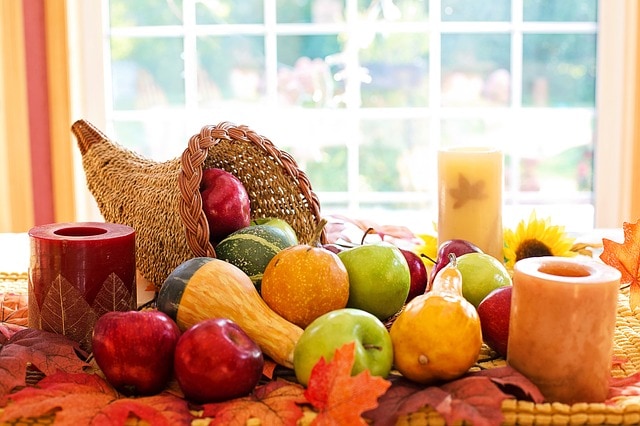
The cornucopia became the attribute of several deities of different cultures, including the Celts and the Romans. Most of these gods and goddesses were associated with harvest, prosperity and good fortune. The horn of plenty was also a traditional offering to gods and emperors, and later became a symbol of personified cities.
- In Celtic Religion
The cornucopia was depicted on the hands of Celtic gods and goddesses. In fact, Epona, the patron of horses, was portrayed sitting on a throne holding a cornucopia, an attribute that link her with the mother goddesses.
The figurine of Olloudius holding a plate of offering and a cornucopia implies that he was associated with prosperity, fertility, and healing. His worship was known in both Gaul and Britain, and identified with Mars by the Romans.
- In Persian Art
Since the Parthians were semi-nomadic people, their art was influenced by diverse cultures they had come in contact with, including the Mesopotamian, Achaemenid, and Hellenistic cultures. During the Parthian period, around 247 BCE to 224 CE, the cornucopia was depicted on a stone slab of a Parthian king offering sacrifice to the god Heracles-Verethragna.
- In Roman Literature and Religion
The gods and goddesses of the Greeks were adopted by the Romans, and significantly influenced their religion and mythology. The Roman poet Ovid wrote several stories that are mostly Greek but contained Roman names. In his Metamorphoses, he featured the story of Heracles who became known as Hercules by the Romans, along with the account of the hero breaking off Achelous’s horn—the cornucopia.
The cornucopia was also depicted in the hands of Roman goddesses Ceres, Terra, and Proserpina. Identified with the Greek goddess Tyche, Fortuna was the Roman goddess of fortune and abundance, associated with the bounty of the soil. She was worshiped extensively in Italy from the earliest times, and her statue from the 2nd century CE depicts her holding a cornucopia filled with fruits.
In ancient Roman religion, the lar familiaris was a household deity that protected the members of the family. The Lares were depicted holding a patera or bowl and a cornucopia, which also imply that they were concerned with the prosperity of the family. From the time of Emperor Augustus onwards, lararium or a small shrine containing two Lares was built in every Roman house.
- In the Middle Ages
The cornucopia remained a symbol of abundance and good fortune, but it also became a symbol of honor. In the Gospels of Otto III, the personified provinces bring tribute to Otto III, with one of them holding a golden cornucopia. Even though there are no fruits visible, the cornucopia implies abundance, which makes it an appropriate offering for the Holy Roman emperor.
During this period, the cornucopia had been used in iconography of city personifications. In a 5th century diptych, the figure representing Constantinople was depicted holding a large cornucopia in the left hand. In the Stuttgart Psalter, a 9th-century volume containing the Book of Psalms, the personified Jordan River was also portrayed holding a cornucopia sprouting flowers and leaves.
- In Western Art
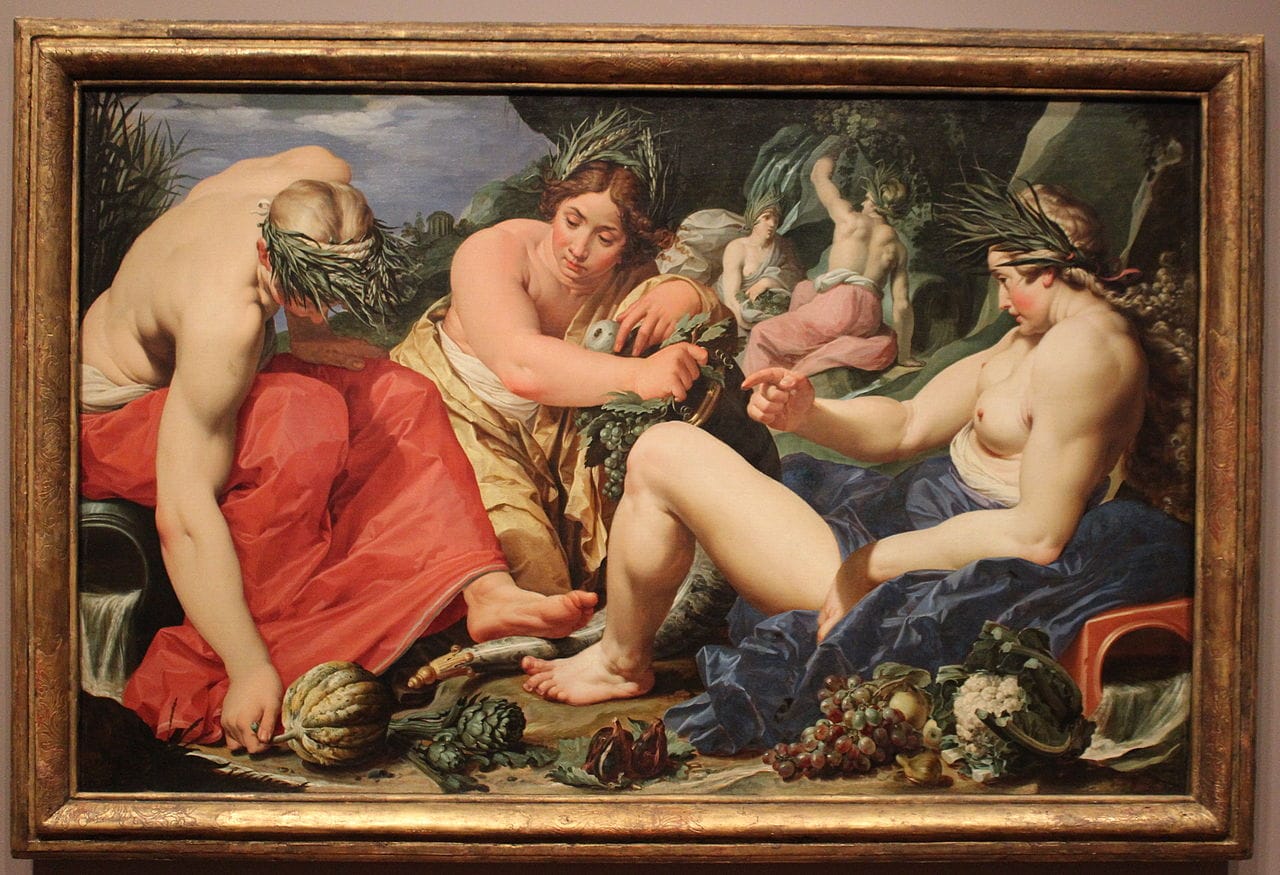
One of the earliest depictions of cornucopia in art can be traced back to Abraham Janssens’ The Origin of the Cornucopia in 1619. It was likely painted as an allegory of fall, and the specific scene relates to the battle of Heracles and river god Achelous. The painting depicts the Naiades stuffing the horn of plenty with a variety of fruits and vegetables, all painted by the artist in great detail.
In a 1630 Abundantia painting by Peter Paul Rubens, the Roman goddess of abundance and prosperity is depicted spilling an array of fruits from a cornucopia to the ground. In Theodor van Kessel’s Allegory of Abundance, Ceres, the Roman goddess of the growth of food plants, is depicted holding a cornucopia, while Pomona, the goddess of fruit trees and orchard, is shown feeding fruit to a monkey.
Cornucopia in Modern Times
The cornucopia eventually became associated with Thanksgiving. It found its way into popular culture, as well as on the coat of arms of several countries.
At Thanksgiving
In the US and Canada, Thanksgiving Day is celebrated annually, and typically includes turkey, pumpkin pie, cranberries—and cornucopias. The American holiday was inspired by a 1621 harvest feast shared by the Wampanoag people and the English colonists of Plymouth.
It isn’t clear how the cornucopia became associated with Thanksgiving, but it’s likely because the holiday is all about celebrating the harvest and blessings of the past year—and the cornucopia historically embodies all those things.
In State Flags and Coat of Arms
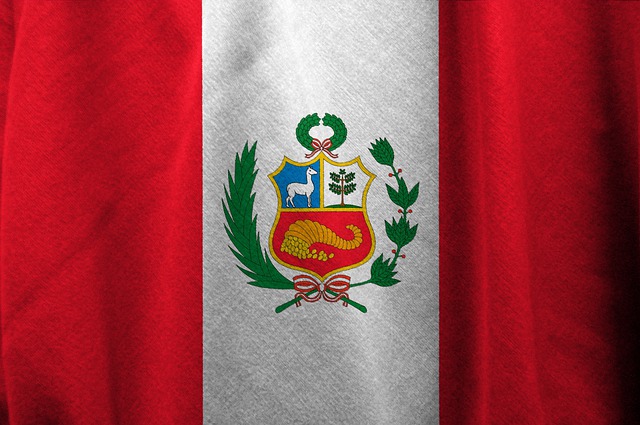
As a symbol of prosperity and abundance, the cornucopia has appeared on the coat of arms of different countries and states. On the state flag of Peru, it is depicted spilling gold coins, which is symbolic of the country’s mineral wealth. It also appears on the coat of arms of Panama, Venezuela and Columbia, as well as of Kharkiv, Ukraine, and Huntingdonshire, England.
The New Jersey state flag features Roman goddess Ceres who holds a cornucopia filled with many fruits and vegetables grown in the state. Also, the Wisconsin state flag features cornucopia as a nod to the state’s agricultural history. In the seal of North Carolina, it’s also depicted along robe-covered figures of Liberty and Plenty.
The Hunger Games’ Cornucopia
Did you know that the cornucopia also inspired the sculptural horn described as being at the center of the Hunger Games arena, in the famous young adult dystopian novels The Hunger Games? During the 75th annual Hunger Games, the Cornucopia provided weaponry and supplies to Katniss Everdeen and her fellow tributes to help them survive in the arena. In the book, it’s described as a giant golden horn, but it appears as a silver or gray structure in the movie.
Writer Suzanne Collins makes use of the cornucopia as a symbol abundance—but rather than food, she associates it with weapons. This makes it a symbol of both life and death, as the Cornucopia is the site of slaughter at the beginning of the games. Most of the tributes will die in the bloodbath as they try to retrieve supplies from the golden horn.
In Brief
As a symbol of abundance and a bountiful harvest, the cornucopia remains one of the most popular objects, still used today in celebrations like Thanksgiving. With its origins in Greek mythology, it transcended its origins to influence cultures around the world.








